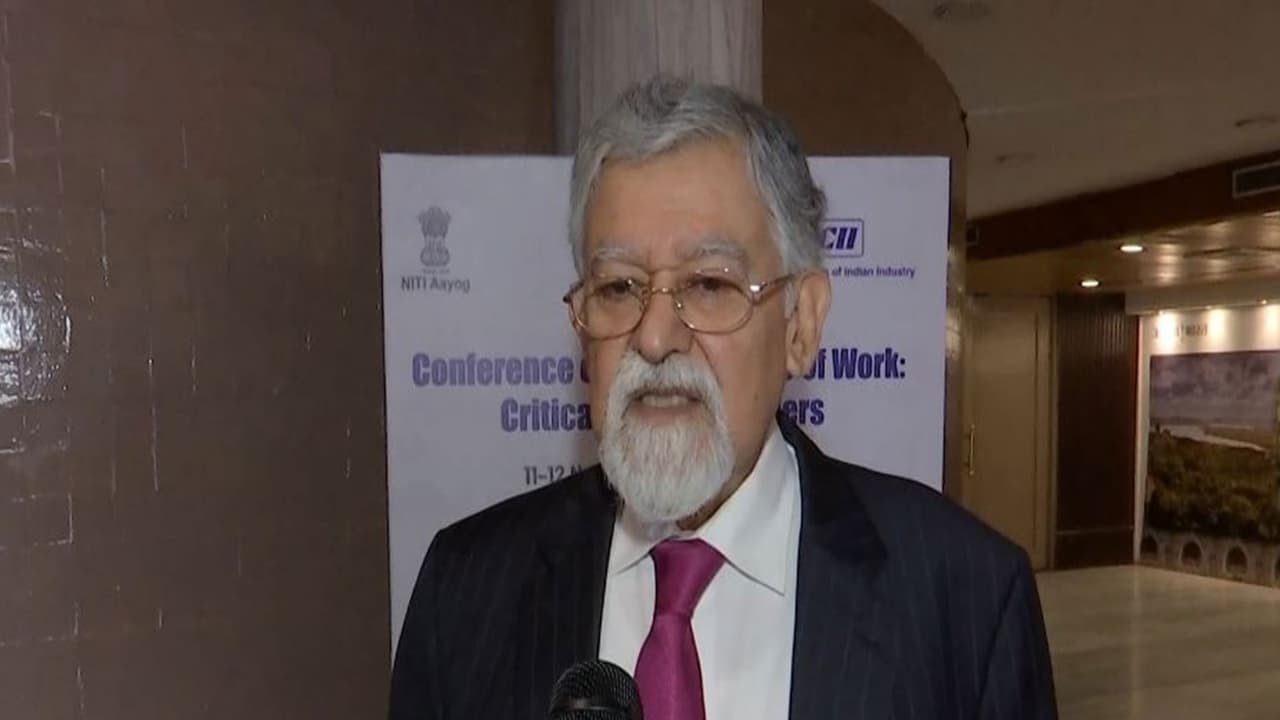NITI Aayog’s Arvind Virmani states that combining Artificial Intelligence, Corporate Social Responsibility funds, and large-scale skilling is crucial for India to convert its demographic advantage into sustained, job-led economic growth.
Artificial Intelligence (AI), Corporate Social Responsibility (CSR) and large-scale skilling must come together if India is to transform its demographic advantage into sustained job-led growth, says Arvind Virmani, Member, NITI Aayog, to ANI.
A Three-Pronged Approach: CSR, Government, and Industry
“Higher allocation of CSR funds should be directed towards skilling, particularly for those at the margins of the formal labour market,” he said, adding that the state governments and NGOs must step up to provide funds and expertise to skill self-employed and less educated people.
The state government, he said, has a “critical role as information provider and coordinator at every level – national, state and local.”
But while the state creates the enabling framework, it is industry that sets the direction of demand. “Industry is the key demander of job skills,” he said, stressing its “critical role in defining needed skills, helping training institutions with machinery and trainers” and providing “learning by doing” opportunities in the form of apprenticeships.
Public-private partnership, he argued, is the bridge that can link these advantages with outcomes. The government already runs “numerous programmes on skilling,” he said, but “industry incentives can work” when a higher share of CSR funds is channelled into skilling and when companies actively help design and deliver training.
AI as a Structural Shift
If AI-driven innovation, CSR investments and grassroots skilling initiatives can be aligned, Virmani suggested, India will be better placed not only to create jobs for its own youth, but to supply skills to a world that is ageing and increasingly short of workers.
He also launched the 7th edition of India Decoding Jobs 2026 by digital recruitment platform Taggd, in collaboration with the Confederation of Indian Industry (CII), at the Conference on Jobs & Future of Work: Critical Growth Enablers in New Delhi.
On technology, Virmani framed Artificial Intelligence not as a threat but as a structural shift. AI, he said, has both “complement and substitution effect” and is aimed at improving the quality of services such as health, education and skilling itself.
“Blended human and AI systems will improve social, personal and government services,” he observed, arguing that technological learning is now the key to ensuring jobs.
Localised Skilling for Global Opportunities
He said that India’s skilling push must be rooted in local realities. Skilling institutions at the local level, he said, are essential to connect people with emerging opportunities.
“Jobs and skills are two sides of the same coin,” he remarked, adding that “Skill for India means Skill for the world.”
India’s Unique Employment Structure
Citing the employment structure, Virmani pointed out that India is unlike most other countries. The country has three broad forms of employment, with regular workers in manufacturing accounting for just 11.7 per cent, while self-employed workers make up 57.7 per cent.
Decoding Jobs 2026, report highlighted that nearly 85 per cent of India’s workforce is employed in the informal sector, contributing about 45 per cent to GDP. Agriculture anchors this ecosystem, employing over 20 crore people, followed by manufacturing, where nearly 70 per cent of enterprises operate on a contractual or informal basis. This, the report warned, underscores India’s dual challenge: to formalise employment while protecting livelihoods.
Harnessing a Demographic Advantage
Looking at global trends, Virmani noted that the working-age population and labour force shares of the EU, USA and other developed countries are declining, while they are rising in India. This gives India “a relative advantage in both school-educated medium-skilled and college-educated high-end human capital,” even as Europe and the US are likely to retain an edge in “technology and risk capital.”(ANI)
(Except for the headline, this story has not been edited by Asianet Newsable English staff and is published from a syndicated feed.)
